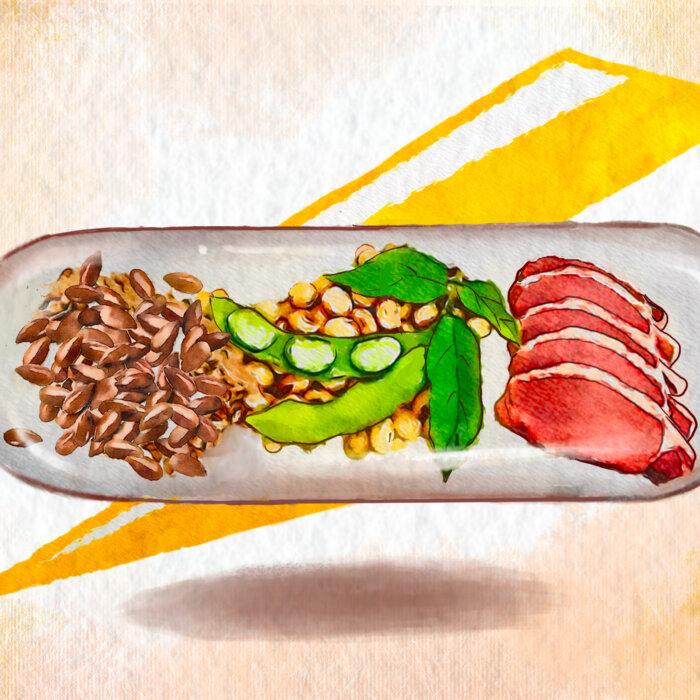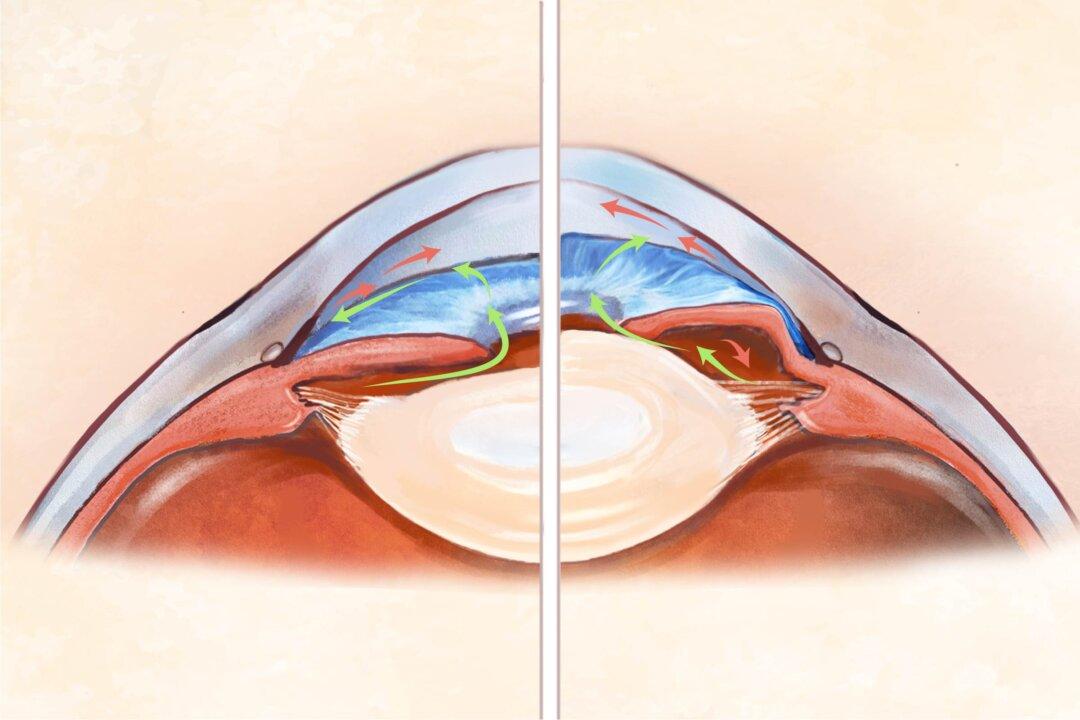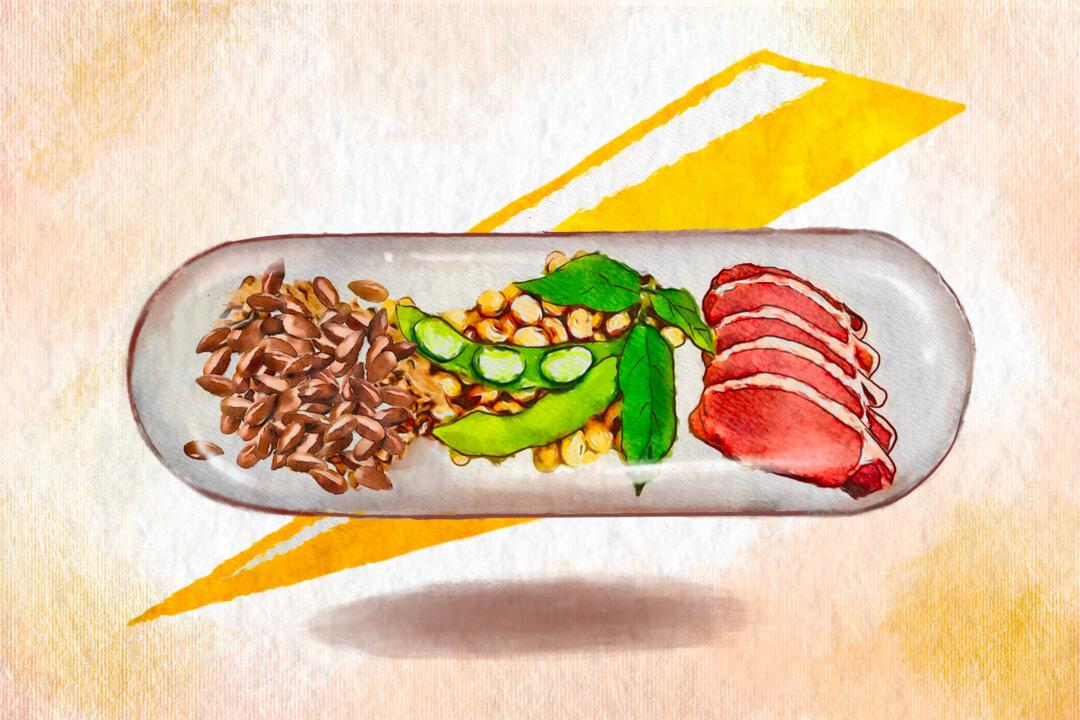The patient was suffering from scurvy, a disease that took the lives of an estimated 2 million sailors between the 1500s and 1800s. Its cause? Severe vitamin C deficiency.
After adjusting her diet and taking vitamin C supplements, the woman soon reported less pain, better exercise tolerance, and significant improvement in her skin condition.
This water-soluble vitamin can be found in various fresh foods, such as citrus fruits, bell peppers, and cruciferous vegetables. This article will also reveal other sources.
What Are the Key Health Benefits of Vitamin C?
1. Aids in Liver Detoxification
Vitamin C is essential for your liver because it helps regenerate a key detoxification tripeptide called glutathione. Glutathione plays a crucial role in reducing the toxic load in your body by improving the liver’s ability to convert and eliminate toxins, such as mercury and persistent organic pollutants.2. Maintains Healthy Skin, Bones, and Connective Tissue
Vitamin C helps make a crucial protein called collagen, essential for skin, bones, muscles, and even blood vessels. Without enough vitamin C, your body struggles to heal wounds, maintain strong bones and teeth, and absorb iron properly. Vitamin C is the director that tells the amino acids (building blocks for collagen) glycine, proline, and lysine how to synthesize collagen, ensuring your body can build and repair itself effectively.3. Regulates Immunity
Vitamin C helps the immune system by regulating its activity, which can be especially beneficial for autoimmune conditions and contributes to its immune defense. Specifically, vitamin C supports both the innate and adaptive immune systems. It also helps maintain the skin’s protective barrier by shielding it against harmful molecules called reactive oxygen species (ROS). Vitamin C also helps remove cellular debris and plays a role in the growth and function of critical immune cells, such as B- and T-lymphocytes, which produce antibodies for fighting infections.
4. Converts Fat Into Energy
When the body uses fat for energy, it goes through a process inside tiny energy-producing units called mitochondria. Fats use a special shuttle called carnitine to enter mitochondria. Your body produces carnitine with the help of vitamin C. If you don’t have enough vitamin C, your body might struggle to break down fats for energy. If you’re following a ketogenic diet, which relies heavily on fat for fuel, your need for vitamin C may increase.5. Reduces Heavy Metal Accumulation
The accumulation of heavy metals such as mercury and chromium can severely damage various organs and systems, such as the respiratory, nervous, and reproductive systems. Vitamin C can reduce heavy metal accumulation, possibly by scavenging free radicals generated by heavy metals, thus inhibiting their genotoxic effects, and by reactivating repair mechanisms that heavy metals have inactivated.6. Regulates Cholesterol
One systematic review found that vitamin C could decrease total cholesterol in people under 52 years old, and another study showed that taking at least 500 milligrams of vitamin C daily for at least four weeks could notably reduce serum low-density lipoprotein (LDL) cholesterol and triglyceride levels. However, while the systematic review also found vitamin C supplementation capable of significantly increasing high-density lipoprotein (HDL) cholesterol levels, the second study didn’t find a significant increase in serum HDL.7. Fights Atherosclerosis
Atherosclerosis is characterized by the thickening or hardening of the arteries due to plaque accumulation in their inner lining. This plaque buildup restricts blood flow and can lead to various cardiovascular problems. Vitamin C helps protect against atherosclerosis by reducing the stickiness of white blood cells to artery walls, improving blood vessel function, and preventing the death of cells in blood vessel walls. This helps keep plaques in arteries stable and reduces the risk of blockages.8. Improves Mental Health
In addition to affecting mood, thinking, memory, and sleep, serotonin also helps control appetite, nutrient absorption, and gut movement. It is linked to various mental disorders, including depression, anxiety, attention-deficit/hyperactivity disorder (ADHD), sleep disorders, and schizophrenia. Vitamin C plays a crucial role in synthesizing serotonin. High levels of vitamin C are linked to better moods in male college students, and the vitamin can also improve the mood of hospitalized patients.9. Helps Adrenal Glands Generate Essential Hormones
The adrenal glands assist in the production of adrenaline, cortisol, and progesterone. Vitamin C contributes to the formation of these hormones in the following ways:- Epinephrine (aka adrenaline) and noradrenaline: Vitamin C is crucial for producing and metabolizing adrenaline properly. Sometimes, people can produce adrenaline but cannot properly metabolize it. Without enough vitamin C, adrenaline levels can remain elevated, which can lead to increased anxiety and an exaggerated fight-or-flight response. This chronic fight-or-flight state can inhibit digestion, make it difficult to adapt to stress, impair healing, and lead to “hamster thinking,” where the mind is stuck in a loop of persistent worry.
- Cortisol: As a “stress hormone,” cortisol temporarily reduces inflammation, and vitamin C can enhance cortisol production.
- Progesterone: Vitamin C can help the adrenal glands produce more progesterone.
10. Boosts Iron Absorption
Vitamin C enhances the absorption of nonheme iron, which is present in plant-based foods such as leafy greens. Therefore, adding a vitamin C-rich food or drinking a glass of freshly squeezed 100 percent orange juice with meals containing nonheme iron sources may increase iron absorption. Freshly squeezed orange juice is reported to contain higher levels of vitamin C than commercial orange juices.11. Prevents and Targets Cancers
Certain types of cancer exhibit inverse associations with vitamin C intake or concentration. In one 1999 study, premenopausal women with a family history of breast cancer had a 53 percent to 63 percent lower risk of developing the disease when consuming an average of 205 milligrams a day of vitamin C from food compared to those consuming an average of 70 milligrams per day.12. Improves Endothelial Dysfunction
Endothelial dysfunction occurs in the early stages of vascular disorders, which can contribute to complications such as stroke, heart attack, diabetes, and metabolic syndromes. A 2014 meta-analysis found that short-term vitamin C supplementation reduced endothelial dysfunction in individuals with heart failure, atherosclerosis, or diabetes. Therefore, vitamin C supplementation may help reduce the risk of cardiovascular disease.13. Regulates Folate Metabolism
Folate metabolism involves how our bodies use folate, a type of vitamin B, which is crucial for many processes. One critical process is methylation, vital for synthesizing DNA, regulating gene expression, producing neurotransmitters, and detoxifying ourselves from harmful substances. Vitamin C helps with folate methylation and boosts folate levels. Plus, it might lower levels of a compound called homocysteine, linked to heart disease risk.14. Slows Age-Related Macular Degeneration
Research indicates that combining vitamin C with other nutrients can potentially slow the progression of age-related macular degeneration (AMD). A 2001 study involving 3,640 individuals aged 55 to 80 years with AMD, who were at high risk of advanced AMD, found that those who took a daily dietary supplement containing 500 milligrams of vitamin C, 80 milligrams of zinc, 400 international units (IUs) of vitamin E, 15 milligrams of beta carotene, and 2 milligrams of copper for approximately six years had a reduced likelihood of developing advanced AMD. They also experienced less vision loss than those who did not take the supplement.How Common Is Vitamin C Deficiency?
What Are the Signs and Symptoms of Vitamin C Deficiency?
Vitamin C deficiency typically results from a diet low in vitamin C.
- Excessive alcohol intake
- Infant feeding practices: Choosing cow’s milk over breast milk or fortified formula for infants can increase the risk of vitamin C deficiency due to insufficient vitamin C content in cow’s milk.
- Malabsorptive disorders: Conditions such as inflammatory bowel disease (IBD) and cystic fibrosis can impede the body’s vitamin C absorption.
- Bariatric surgery: People who have had bariatric surgery face reduced absorption capacity.
- Iron-overload conditions: Conditions characterized by excess iron accumulation and renal loss of vitamin C can contribute to vitamin C deficiency as the body may struggle to retain and utilize this vitamin effectively.
- Food allergies: Allergies to certain foods can restrict dietary choices, potentially limiting the intake of vitamin C-rich foods.
- Developmental disabilities and mental illness: These medical conditions may influence food preferences, potentially leading to inadequate consumption of vitamin C-rich foods.
- Fatigue
- Weakness
- Irritability
- Weight loss
- Vague muscle pain
- Joint pain
- Femoral neuropathy due to bleeding into femoral sheaths (the sleeve-like structure encasing the femoral artery and vein)
- Swelling in the lower extremities
- Painful bleeding
- Abnormal accumulation of fluid inside a joint cavity
- Dry and splitting hair
- Gingivitis (inflammation of the gums) or bleeding gums
- Rough, dry, and scaly skin
- Slow wound healing
- Easy bruising
- Nosebleeds
- Subcutaneous bleeding
- Potential weight gain due to a decrease in metabolic rate
- Varicose veins: The development of varicose veins may occur due to the lack of collagen caused by vitamin C deficiency, as collagen plays a role in shaping the vascular system. Insufficient vitamin C levels can lead to vein ruptures or bulging, resulting in varicose veins.
- Heavy metal toxicity: Vitamin C plays a crucial role in protecting against certain heavy metals, so low levels could contribute to increased levels of heavy metals in the body.
- Estrogen dominance: Vitamin C can boost progesterone production. Low progesterone levels can cause estrogen dominance, which may contribute to thyroid issues.
- Irritability
- Painful movement
- Anorexia
- Slowed growth
- Impaired bone growth
- Bleeding
- Anemia
- Persistent fatigue and weakness
- Chronic irritability and sadness
- Pain in joints, muscles, or legs
- Swollen and bleeding gums (with a risk of tooth loss)
- Red or blue spots on the skin, often on the lower extremities (might be less visible on darker skin tones)
- Easily bruised skin
What Are the Dietary Sources of Vitamin C?
Fresh fruits and vegetables are the primary and best dietary sources of vitamin C.
- Guavas (228 mg)
- Red bell peppers (142 mg)
- Kiwifruit (92.7 mg)
- Persimmons (66 mg)
- Papayas (60.9 mg)
- Strawberries (58.8 mg)
- Lemons (53 mg)
- Pineapples (47.8 mg)
- Oranges (45 mg)
- Cantaloupes (36.7 mg)
- Mangos (36.4 mg)
- Cooked ripe red tomatoes (22.8 mg)
- Kale (93.4 mg)
- Broccoli (89.2 mg)
- Brussels sprouts (85 mg)
- Mustard greens (70 mg)
- Turnip greens (60 mg)
- Red cabbage (57 mg)
- Cauliflower (48.2 mg)
- Bok choy (45 mg)
- Green peas (40 mg)
- Swiss chard (30 mg)
- Spinach (28.1 mg)
- Cooked beef spleen (50.3 mg)
- Cooked veal thymus (39.4 mg)
- Cooked beef lungs (32.7 mg)
- Cooked fish roe (16.4 mg)
How Can I Optimize Vitamin C Intake and Absorption?
- Avoid prolonged storage and cooking when possible: Long-term storage and cooking can diminish the vitamin C content in food since ascorbic acid, being water-soluble, breaks down with heat. Luckily, many top vitamin C sources, such as fresh fruits and vegetables, are commonly eaten raw. You can also turn them into smoothies and salads.
- Choose the proper food preparation method: Steaming or microwaving is better than high-heat cooking to minimize vitamin C loss. Cooking quickly or using minimal water, such as stir-frying or blanching, also helps retain the vitamin since vitamin C may end up in the liquid after cooking.
- Eat raw foods at peak ripeness: Fruits and vegetables at peak ripeness contain the most vitamin C.
Which Nutrients Boost Vitamin C’s Effects?
Vitamin C is also involved in the oxidation-reduction (redox) recycling of key antioxidants, such as regenerating oxidized vitamin E back into its active form.
What Are the Different Types of Vitamin C?
There are many different types of synthetic derivatives of vitamin C, which can be found in various supplements, skin care products, and fortified foods. Plant-based sources include acerola, rose hips, elderberry, and camu camu, as well as synthetic sources.
- Synthetic l-ascorbic acid: This type of vitamin C is a white to pale-yellow powder with a sharp, acidic taste, and almost no smell. This form helps enzymes work properly, acts as an antioxidant in food, helps plants grow, and protects against aging. Natural and synthetic l-ascorbic acids are chemically identical, with no known differences in their biological activity or how well they are absorbed and used by the body.
- Sodium ascorbate: Sodium ascorbate is an organic sodium salt. It’s considered a “buffered” form of vitamin C because it is less acidic than ascorbic acid. It is often used in supplements and is gentler on the stomach.
- Calcium ascorbate: Sodium ascorbate and calcium ascorbate are the most common buffered forms of vitamin C. It’s less acidic and easier on the digestive system.
- Ascorbyl palmitate: Ascorbyl palmitate is a fat-soluble form of vitamin C easily absorbed by the body. It has all the same benefits as the water-soluble vitamin C forms. It is also a powerful antioxidant that protects fats in the body from damage and fights free radicals. It is widely used in skin care products.
Supplements
Vitamin C supplements come in various forms, including tablets, capsules, chewables, gummies, dissolving powders, liquid forms, and liposomal options. These include unencapsulated versions, traditional without added fats, and encapsulated forms such as liposomal. A liposome is a fatty, spherical vessel that transports microscopic particles in the body.The debate over the optimal form of vitamin C supplementation continues. Those seeking less processed options advocate for whole-food supplements.
Contraindications
Vitamin C supplementation also has contraindications. Supplementation is not recommended for individuals with certain blood disorders such as thalassemia, G6PD deficiency, sickle cell disease, and hemochromatosis. It’s also advised to avoid taking vitamin C supplements around the time of angioplasty procedures.Diabetic patients should exercise caution when taking vitamin C supplements, which can elevate blood sugar levels. Individuals with oxalate nephropathy or nephrolithiasis should also be cautious, as vitamin C supplementation can potentially increase the risk of precipitating cysteine, urate, and oxalate stones.
Intravenous Supplementation
Vitamin C can be administered intravenously (IV) in medically supervised settings to achieve higher levels in the bloodstream. This approach can improve the quality of life in people with advanced-stage cancers.What Are Other Ways to Get Vitamin C?
Magnesium ascorbyl phosphate (MAP) is the most stable and preferred form of vitamin C for skin care. This molecule, which loves lipids, is readily taken in by the skin. Surprisingly, its absorption isn’t hindered by crossing the outer skin layer (stratum corneum) but rather by how it’s released from the product. MAP moisturizes the skin and reduces water loss throughout. It also fights free radicals, protecting against sun damage, and in lab settings, it boosts collagen production.
What Is the Recommended Dietary Allowance of Vitamin C?
For infants up to 12 months, the adequate intake (AI) is set to match the average vitamin C intake of healthy, breastfed infants.

How Can I Test My Vitamin C Levels?
The plasma vitamin C test involves venipuncture, drawing blood from the inner elbow or back of the hand and storing it in a sealed container. Results are typically available within three to four days.
What Happens if I Get Too Much Vitamin C?
Infants born to mothers taking high doses of vitamin C (over 6,000 milligrams) may experience rebound scurvy due to a sudden drop in their vitamin C intake after birth. Pregnant women should consult their doctor before consuming over 1,000 milligrams of vitamin C.
The FNB has also set upper limits (ULs) for vitamin C, which apply to both dietary sources and supplements.
- Birth to 12 months: unestablished
- 1 to 3 years: 400 milligrams
- 4 to 8 years: 650 milligrams
- 9 to 13 years: 1,200 milligrams
- 14 to 18 years: 1,800 milligrams
- 14 to 18 years (pregnancy): 1,800 milligrams
- 14 to 18 years (lactation): 1,800 milligrams
- Over 19 years: 2,000 milligrams
- Over 19 years (pregnancy): 2,000 milligrams
- Over 19 years (lactation): 2,000 milligrams
Which Medications Interact With Vitamin C?
- Aspirin and nonsteroidal anti-inflammatory drugs (NSAIDs): These medicines can decrease the amount of vitamin C in your body by increasing its loss through urine. Conversely, high doses of vitamin C can lead to higher levels of these drugs in your bloodstream.
- Oral contraceptives and hormone replacement therapy (HRT): When taken with birth control pills and HRT, vitamin C can cause an increase in estrogen levels.
- Acetaminophen: High doses of vitamin C can reduce the amount of acetaminophen excreted in urine, potentially increasing the levels of this drug in your bloodstream.
- Certain antibiotics: Taking vitamin C with antibiotics tetracycline, minocycline, and doxycycline might increase their levels in the body. However, they can also reduce the effectiveness of vitamin C.
- Barbiturates: Barbiturates such as phenobarbital, pentobarbital, and seconobarbital can reduce vitamin C’s effectiveness.
- Aluminum-containing antacids: Vitamin C can enhance the absorption of aluminum from these medications, potentially intensifying their side effects.
- Warfarin: Vitamin C has occasionally been reported to interfere with the effectiveness of the blood-thinning medication warfarin.







